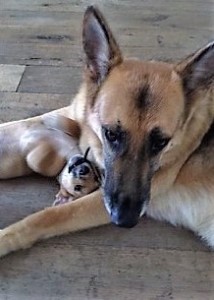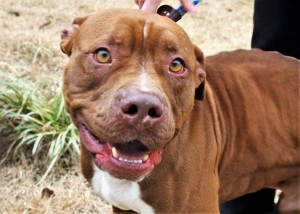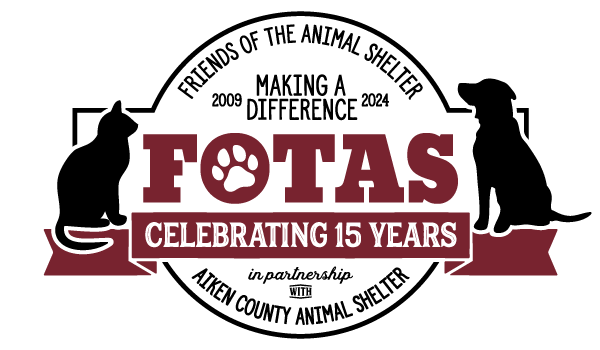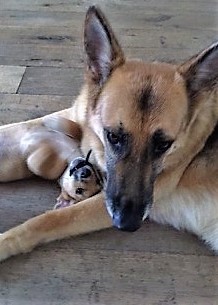I foster because I love dogs, all dogs. The Aiken County Animal Shelter has a big need for short term fosters for dogs being transferred to a sister agency in the north. Fortunately, I can foster often because my own pack of dogs helps with all the work.
There are five dogs in my pack, all rescues themselves. They range in age from one to 16 years old and in size from 15 to 85 pounds. The pack includes Max, a German Shepard; Annie and Scout, my terrible terriers; Foxy, my sweet, gentle large Chihuahua mix; and Bitsy, my fabulous 16-year-old Jack Russell terrier.
The pack is the natural social order for dogs, which is why they are so good at helping these frightened, dislocated dogs. They have never let me down. Here’s how it works. Once a dog has been selected for transfer to a sister agency in the north, I pick up my foster dog at the Shelter and do a quick assessment of their temperament on the ride home—the dog is typically anxious and frightened (what, another change?). I let them out of the car into the fenced driveway and give them a few minutes to look around and sniff the scent of my other dogs. Then, I let the pack out of the house. Intimidated at first by the rush of dogs, the foster often hides under the car. Once the original hoopla has calmed down, the newcomer comes out to meet the pack. One by one, my dogs introduce themselves with a friendly sniff and then go about their normal routine.
The foster dog learns the pecking order quickly, first making friends with big Max and sweet Foxy. When the foster is ready for a little fun, it romps with Scout, the youngest and roughest player of the pack. Annie takes her time making up her mind about the new arrival. Bitzy, on the other hand, is the mother of the group; she licks the new arrival clean and teaches it to behave while being groomed.

I keep a very large crate in my kitchen for all newcomers until I am certain they are housebroken. I feed the foster dog in the crate during the twice-a-day feeding times to avoid any issues over food, and I always crate a new dog at night. Other than that, the foster dog moves in and out of the house all day with the pack; it never takes long to fall into the routine. There are occasional mishaps from time to time, like mistaking a chair leg for a chew toy, but those incidents are few and far between.
Is it hard to give them up? It is, but I know I am helping the foster dog become calmer and more sociable for the trip north and for their new family. Sometimes I am lucky enough to get a photo of one of my fosters with their new family.
That makes it all worthwhile.
Here’s the takeaway: don’t be afraid to foster because you already have dogs. Your canine pals will do most of the work and give a foster dog the greatest gift of all — to be part of the pack.
Their lives are in our hands.
By Sam Cato, FOTAS volunteer and foster
By the Numbers
February Adoption Special: dogs & puppies $35, cats & kittens $10
Pets of the Week
RALLIE

Mixed breed, male, 1 year old, brown with white, 57 pounds – $35
PANDORA

Domestic Shorthair, female, 6 months old, brown and gray Tabby, 2.2 pounds – $10


